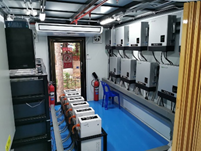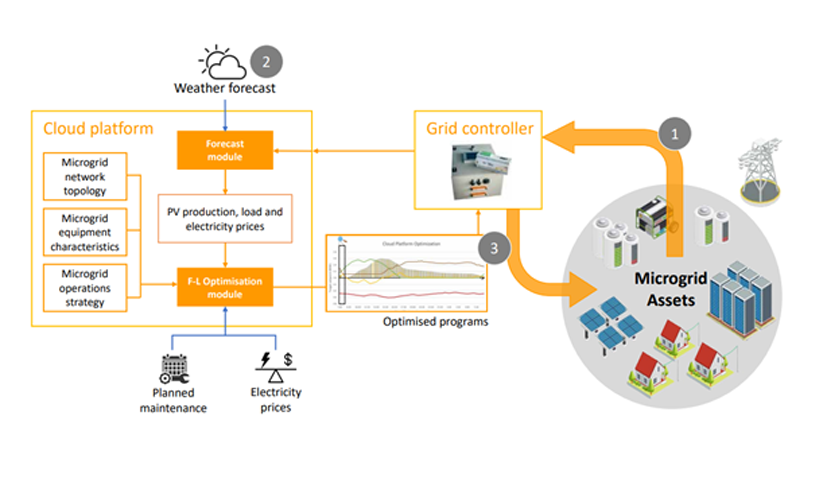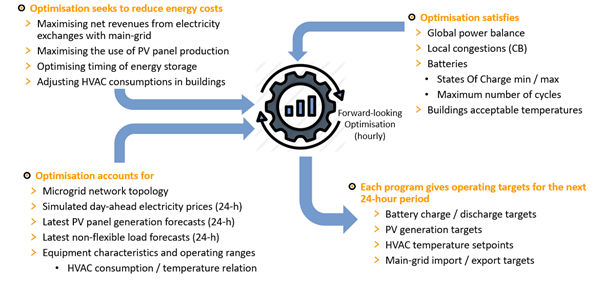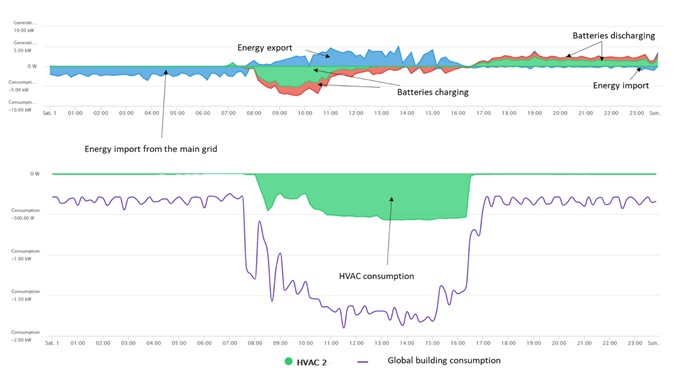Thailand has initiated an ambitious national microgrid policy under The Thailand Smart Grid Development Master Plan 2015 – 2036.
A microgrid is an integrated system consisting of the combination of distributed energy resources including renewable assets (Solar PV, wind turbines…), fossil-fired power generation units (usually diesel generator sets …) and battery storage systems delivering electrical power to critical and non-critical loads. Energy is therefore produced and consumed locally but it can also, in some cases, be sourced from or exported to the existing main grid infrastructure.
Microgrid projects are today flourishing across Thailand to serve various purposes. They are expected to be a game-changer to improve elec trical power reliability, increase renewables use, and lower the electricity bills for end-users. Indeed, microgrids can create significant value for a wide range of actors but to do so, they require state-of-the-art solutions to operate efficiently.
Energy Pool has developed a unique optimization platform enabling to optimize microgrids, VPPs and hybrid power plant operations. In Thailand, EGAT, Thailand’s leading state-owned power utility relies on Energy Pool’s EMS to operate the Siesangtham microgrid. In this specific microgrid, energy is supplied by a combination of local solar PV generation, battery storage and exchanges with the distribution grid.
The Siesangtham microgrid pilot project
 The microgrid is installed on a school campus located in the South-East of Thailand. The campus welcomes students within 8 buildings some are equipped with air conditioning controlled by Smart Thermostats.
The microgrid is installed on a school campus located in the South-East of Thailand. The campus welcomes students within 8 buildings some are equipped with air conditioning controlled by Smart Thermostats.
On the generation side, 55 kW of solar PV panels including hybrid inverters are available. Finally, battery energy storage systems (40kW – 130kWh) can be charged and discharged. Two operating modes are available: the microgrid can be connected to the main grid or islanded during main grid disturbances. Whenever outages occur on the main grid, batteries are key to ensure supply continuity for critical loads.
Through this microgrid, EGAT’s main expectation is to demonstrate the possibility to deliver reliable power supply while minimizing the cost of energy through energy and power flow optimization. In partnership with TEDA, a local contractor and engineering company, Energy Pool successfully implemented its EMS in less than 6 months. The microgrid pilot project will be surveyed from august 2021 to 2024.
Key challenges in operating the Siesangtham microgrid
 The school campus is in a remote area at the end of a power transmission line. Power flows need to be closely managed in both ways as there is a limited capacity when sourcing or exporting electricity from/to the distribution grid. Solar PV production management is key to avoiding outages. However, there are different kinds of PV panels, and only a third of them have intelligent control functionality and can be remotely controlled by the EMS. A 24/7 Battery energy storage systems control is necessary, with optimal charge and discharge to reduce PV energy curtailment and minimize electricity imports, especially when prices are high (1).
The school campus is in a remote area at the end of a power transmission line. Power flows need to be closely managed in both ways as there is a limited capacity when sourcing or exporting electricity from/to the distribution grid. Solar PV production management is key to avoiding outages. However, there are different kinds of PV panels, and only a third of them have intelligent control functionality and can be remotely controlled by the EMS. A 24/7 Battery energy storage systems control is necessary, with optimal charge and discharge to reduce PV energy curtailment and minimize electricity imports, especially when prices are high (1).
Achieving energy cost optimization using Energy Pool’s EMS
Energy Pool’s solution combines an EMS software cloud platform and a local PLC-based microgrid controller for real-time assets monitoring and optimization.

Energy Pool’s cloud platform generates forecasts (load consumption, PV generation and electricity prices…) and integrates as well external data sources (such as weather forecast, the microgrid equipment’s availability, maintenance schedules…). All data are processed in Energy Pool “forward looking optimization module” to provide optimal operating profiles (optimised programs) for all controllable assets. For optimization purposes, Energy Pool can steer HVAC setting temperatures, PV curtailment and batterie charges/discharges.

Each program defines operating profiles for the upcoming 24-hour period including: battery charge / discharge targets, PV generation targets, HVAC temperature setpoints, Main-grid import / export targets.
The optimization aims to reduce energy costs by:
• Maximizing net revenues from electricity exchanges with main grid
• Maximizing the use of PV panel production
• Optimizing timing of energy storage
• Adjusting HVAC consumptions in buildings
The optimised programs are ideal and theoretical targets only. The local microgrid controller (Flex-box) ensures power quality and real-time dynamic control through the monitoring of all assets. It adjusts target setpoints to adapt to actual conditions and guarantee stability.

EMS optimization in practise
On a typical day, Solar PV panels generate electricity from 6 am till 5 pm. From 8 am, generation starts being higher than demand, battery charging begins. As the EMS’s forecasts indicate high PV production, batteries are charged progressively and energy export to the main grid is activated. Air conditioning setpoint temperature is decreased, resulting in higher HVAC consumption, to benefit from future thermal storage with no discomfort to users.
When generation is lower than demand, batteries discharging starts, and flexible loads are steered by the EMS. This smart steering enables to reduce energy imports and minimize electricity costs.

Significant savings & customer benefits
Over August 2021, the economic optimization performed by the EMS and the efficient steering of controllable PV inverters enabled to reduce energy imports by approx. 1,000 kWh representing a 46% total cost savings. In addition, PV energy curtailment was reduced by approx. 328 kWh.
Power reliability was also ensured, and the school campus did not experience any power outage during microgrid operations.
Customer testimonial – Weerayut SRITHIAM – Head of Investment analysis EGAT – project manager of Siesangtham project
“Through the microgrid, we can not only monitor and control distributed generation, but also directly manage consumptions. In the Siesangtham microgrid, as it’s located in a remote area, system communication isn’t steady and it’s quite challenging for assets monitoring and steering especially PV. Energy Pool’s EMS has covered many areas in assets monitoring and control. Their expertise in battery energy storage operations enables to make the most of PV generation and to reduce energy waste. Working with Energy Pool, we appreciate they quickly react and meet our requirements to adapt the microgrid when needed. In the near future, I think we should go even further and make additional improvements on PV generation optimization as there are still a few energy excesses that are only partially stored through existing working batteries.”
(1) EGAT wanted, through this project, to simulate the economic behaviour of the microgrid in relation to the variable prices of an energy market
